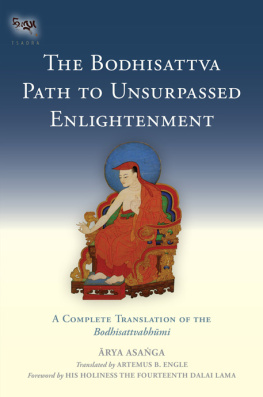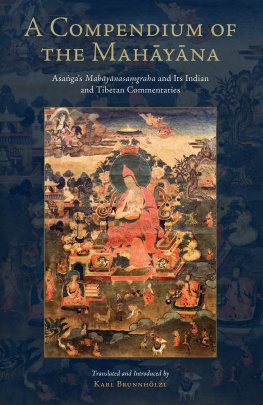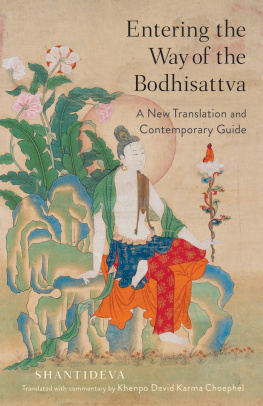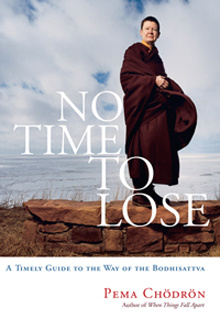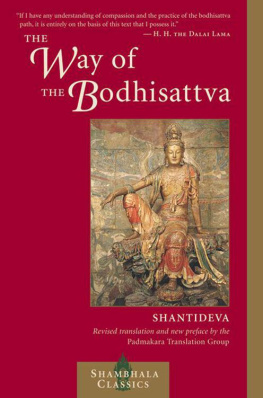Asangas Stage of a Bodhisattva (Bodhisattvabhumi) is the most systematic and influential Indian presentation of the ideal practitioner of Mahyna Buddhism. It has shaped ethics and psychology throughout Asia for centuries and inspired many a Buddhist to emulate the altruistic spirit and actions of the bodhisattva. With the publication of Artemus Engles superb, scholarly, and readable translation, this Great Vehicle classic at last is available to readers of English. It belongs on the shelfand in the handsof anyone interested in a classic Buddhist account of how to live in the world with wisdom, compassion, and joy.
Roger R. Jackson, Carleton College
Art Engles translation of Asangas monumental Bodhisattva Stage is a major work of excellent scholarshippresented in a way that is also useful to practitioners. It is truly impressive and remarkable, the fine job he has done with this seminal and rather difficult work. Anyone who aspires to follow the way of the bodhisattva, the wholehearted altruist who undertakes the evolutionary path through countless lives toward the perfectly blissful enlightenment of buddhahood, is well-advised to study this work in all its sparkling detail. I strongly recommend this wonderful jewel of a work.
Robert A. F. Thurman, Jey Tsong Khapa Professor of Indo-Tibetan Buddhist Studies, Columbia University
ABOUT THE BOOK
rya Asangas Bodhisattvabhmi, or The Stage of a Bodhisattva, is the Mahyna traditions most comprehensive manual on the practice and training of bodhisattvasby the authors own account, a compilation of the full range of instructions contained in the entire collection of Mahyna sutras. A classic work of the Yogcra school, it has been cherished in Tibet by all the historical Buddhist lineages as a primary source of instruction on bodhisattva ethics, vows, and practices, as well as for its summary of the ultimate goal of the bodhisattva pathsupreme enlightenment.
Despite the texts seminal importance in the Tibetan traditions, it has remained unavailable in English except in fragments. Engles translation, made from the Sanskrit original with reference to the Tibetan translation and commentaries, will enable English readers to understand more fully and clearly what it means to be a bodhisattva and practitioner of the Mahayana tradition.
ARTEMUS B. ENGLE has a PhD in Buddhist Studies from the University of Wisconsin and has studied Tibetan Buddhism for more than thirty-five years. He teaches Tibetan literature at the Mahayana Sutra and Tantra Center in Howell, New Jersey, and is a fellow at the Tsadra Foundation.
Sign up to receive weekly Tibetan Dharma teachings and special offers from Shambhala Publications.

Or visit us online to sign up at shambhala.com/edharmaquotes.
T HE T SADRA F OUNDATION S ERIES
published by Snow Lion, an imprint of Shambhala Publications
Tsadra Foundation is a U.S.-based nonprofit organization that contributes to the ongoing development of wisdom and compassion in Western minds by advancing the combined study and practice of Tibetan Buddhism.
Taking its inspiration from the nineteenth-century nonsectarian Tibetan scholar and meditation master Jamgn Kongtrl Lodr Tay, Tsadra Foundation is named after his hermitage in eastern Tibet, Tsadra Rinchen Drak. The Foundations various program areas reflect his values of excellence in both scholarship and contemplative practice, and the recognition of their mutual complementarity.
Tsadra Foundation envisions a flourishing community of Western contemplatives and scholar-practitioners who are fully trained in the traditions of Tibetan Buddhism. It is our conviction that, grounded in wisdom and compassion, these individuals will actively enrich the world through their openness and excellence.
This publication is a part of the Tsadra Foundations Translation Program, which aims to make authentic and authoritative texts from the Tibetan traditions available in English. The Foundation is honored to present the work of its fellows and grantees, individuals of confirmed contemplative and intellectual integrity; however, their views do not necessarily reflect those of the Foundation.
Tsadra Foundation is delighted to collaborate with Shambhala Publications in making these important texts available in the English language.
The Bodhisattva Path to Unsurpassed Enlightenment

A Complete Translation of the Bodhisattvabhmi
rya Asaga
TRANSLATED BY
Artemus B. Engle
FOREWORD BY
His Holiness
the Fourteenth Dalai Lama
S NOW L ION
B OULDER
2016
Snow Lion
An imprint of Shambhala Publications, Inc.
4720 Walnut Street
Boulder, Colorado 80301
www.shambhala.com
2016 by Tsadra Foundation
All rights reserved. No part of this book may be reproduced in any form or by any means, electronic or mechanical, including photocopying, recording, or by any information storage and retrieval system, without permission in writing from the publisher.
L IBRARY OF C ONGRESS C ATALOGING-IN -P UBLICATION D ATA
Names: Asaga. | Engle, Artemus B., 1948 translator.
Title: The Bodhisattva path to unsurpassed enlightenment: a complete translation of the Bodhisattvabhmi / rya Asaga; translated by Artemus B. Engle.
Other titles: Yogcrabhmi. Bodhisattvabhmi. English.
Description: First edition. | Boulder: Snow Lion, 2016. | Series: The Tsadra Foundation Series | Includes bibliographical references and index. | Translated from Sanskrit and Tibetan.
Identifiers: LCCN 2015009863 | eISBN 978-0-8348-4020-1 | ISBN 9781559394291 (hardback: alk. paper)
Subjects: LCSH: Yogcra (Buddhism) | BISAC : RELIGION / Buddhism / Sacred Writings. | RELIGION / Buddhism / Tibetan. | RELIGION / Buddhism / Rituals & Practice.
Classification: LCC BQ3062.E5 E55 2016 | DDC 294.3/85dc23
LC record available at http://lccn.loc.gov/2015009863

This book contains diacritics and special characters. If you encounter difficulty displaying these characters, please set your e-reader device to publisher defaults (if available) or to an alternate font.
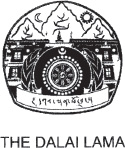

This book, The Bodhisattva Path to Unsurpassed Enlightenment (Bodhisattvabhmi), is a key work of Sanskrit Buddhist literature. It was composed by rya Asaga (fourth century C.E. ), who along with rya Ngrjuna is remembered as one of the trailblazing charioteers of the Mahyna tradition.
The Buddhas teachings and subsequent Buddhist literature can be appraised in several different ways. If we consider the three turnings of the wheel of Dharma, the first deals with the Four Noble Truths, the foundation of all Buddhist doctrine. The second comprises the Perfection of Wisdom teachings and the third explains the nature of the mind. A bodhisattva makes him- or herself familiar with all these teachings. The Perfection of Wisdom teachings can be explained in terms of their view, which Ngrjuna expounded in his writings on the Middle Way (Madhyamaka), or in terms of the stages of the path of training, which Asaga expounded in his encyclopedic
Next page
